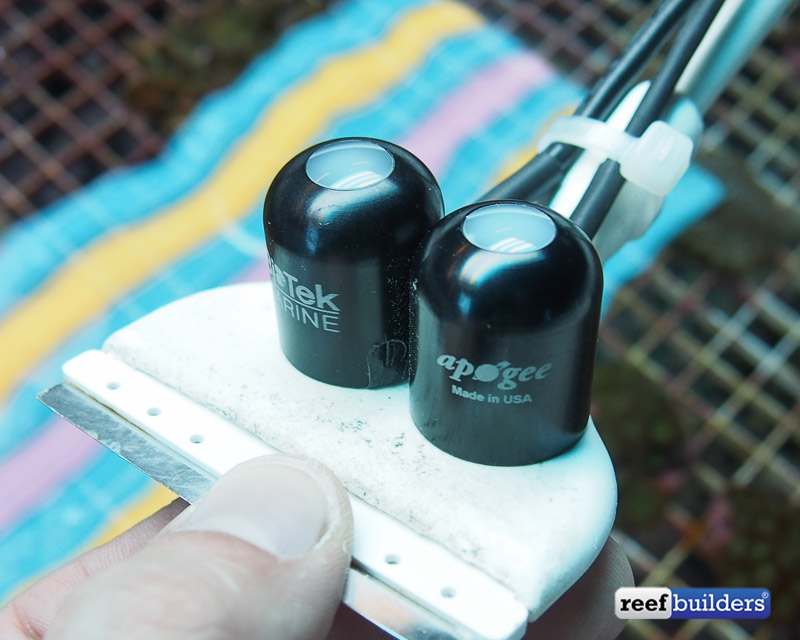BioTek Marine really got a lot of attention when they announced their unique BTM3000 PAR meter. The BTM 3000 is actually a bare PAR sensor with a USB connection to be ‘powered’ by any regular old computer, PC or Mac, and we couldn’t be any more impressed with the execution on the hardware.
Users of Apogee Instruments PAR meter will be immediately familiar with the look and feel of the BTM 3000 which is made by Apogee exclusively for BioTek Marine. There are some custom electronics in the sensor side of the BTM 3000 to allow it to be USB powered, and the 15 foot long USB cord really helps to move the sensor around while it is tethered to a stationary machine, and it will be able to reach much deeper in tanks than the standard Apogee PAR meter.

It took just a little while for the software side of the BTM 3000 to reach the 1.0 version, especially for the Mac platform but now that it has, the BTM 3000 is truly a tool worthy of recommendation and widespread deployment. We are still impressed with how effortless it is to use the BTM 3000 on a computer, as the application near instantaneously recognizes the PAR sensor and there is literally no trouble in getting the hardware and software to work together.
For now the first application is really basic, offering a nice large readout of the PAR value in umols/m2/s and the only thing we wish we could change right now is the sampling rate, as the PAR measurement seems to be sampling at a rate of about 10 times per second so the value jumps around a bit when you are trying to read it. Other than that, a basic logging feature allows PAR value to be recorded over time intervals, which can be set so as to automatically take readings every 5 or ten seconds for logging around the tank, or whatever you happen to be measuring.

A nice neat little feature of the BTM 3000 is the display of PAR value in the system menu of Mac OSX, not sure how useful it is but it’s a cool treat to have true par values measured in umols showing up at the top pf our computer. But now that the hardware is done and completed, we can’t wait to see how the software application for it can be improved to help guide users to log light intensity all over their aquarium, perhaps even with the potential to create custom PAR graphs of light field, spread and intensity in any kind of aquarium.

If you’re curious about lighting intensity in our reef tanks, and want to know the actual PAR value of the light in your own aquariums, buying the $195 BTM 3000 USB PAR sensor over the standalone apogee unit it a no brainer, especially for reef clubs wishing to invest in a useful tool to loan to their members. We’ve been pretty addicted to measuring actual PAR in our reef aquariums with the Apogee meter but the BTM 3000 is poised to replace it, especially as the software matures over time. [Aquarium Specialty]
FCC regulations require us to inform you that we were given this product for review but our opinion and review of a product is never affected by how we acquire it





